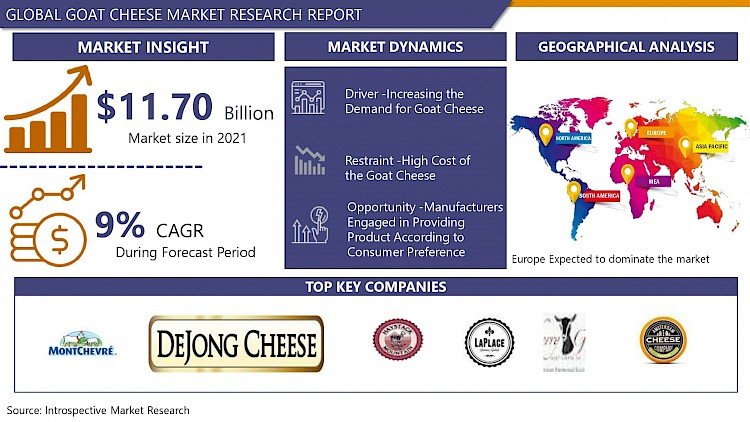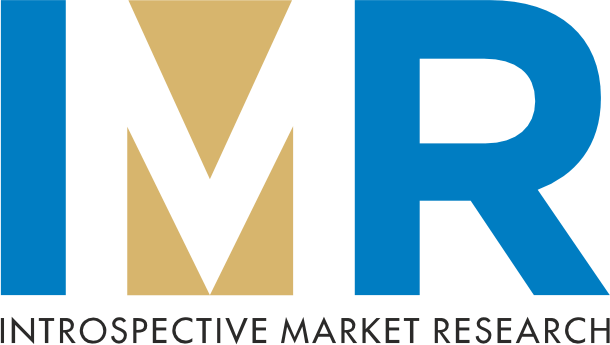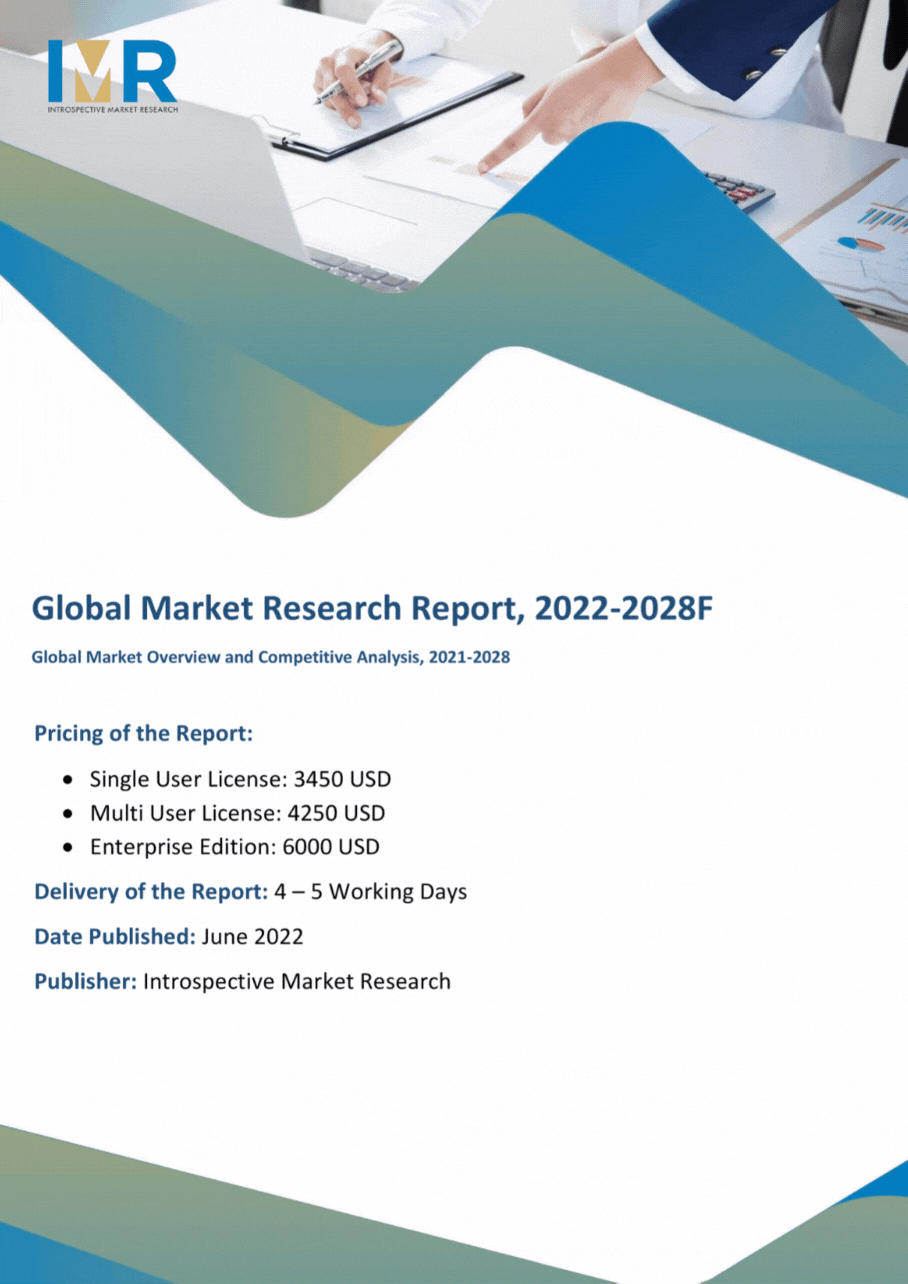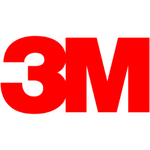Global Goat Cheese Market Overview
The Goat Cheese Market size is anticipated to reach USD 21.39 billion by 2028 from an estimated USD 11.70 billion in 2021, growing at a CAGR of 9% globally.
Goat cheese is produced from the milk of goats. Goat milk contains large-scale medium-chain fatty acids like caproic and caprylic. This gives a tart flavor to the cheese. The goat milk and cheese are made from a goat that is easy to digest. Goat milk has anti-inflammatory enzymes, probiotics, and antioxidants property which include proteins, and lipids, and helps to maintain a healthy metabolism. It also contains a high proportion of calcium, vitamins A and K, phosphorous, thiamine, and niacin. The procedure of goat cheese production is the same as other cheese. Goat cheese is a rich source of selenium. Selenium helps to body break down DNA-damaging peroxides that decline the risk of cancer, thyroid diseases, and cardiovascular disease. Thus, it has anticipated propelling the growth of the Goat Cheese Market in the analysis year.

Market Dynamics And Factors For Goat Cheese Market
Drivers:
Increasing the Demand for Goat Cheese
Goat cheese has numerous applications and is used in baguette pieces, bread, crostini, toast, or bagel sandwiches, pizza, risotto, and pasta meals, as well as soups. It is also used in salads, especially those containing sweet fruits. Goat cheese contains a high source of protein, calcium, lipids, vitamins, and iron. It is a more famous dairy product because of its better nutritional value and contains low fat and cholesterol content. The person who has lactose intolerance, goat cheese is most suitable for them. In addition to this, goat cheese is made in a variety of different tastes by manufacturers which helps to increase the public demand for goat cheese. The goat cheese helps to decrease the risk of thyroid disease, CVS diseases, and cancer. Consumers are more aware of the health benefits of goat cheese people are more concerned about health-related diseases, which helps the rising demand for goat cheese support the growth of the market of goat cheese in the forecast period.
Restraints:
High Cost of the Goat Cheese
Goat cheese is more expensive compared to other cheese owing to the goats don’t produce milk like cows. A reduction in the population of goats is also responsible for an increase in the price of goat cheese. For instance, according to the report of the U.S. Department of Agriculture's National Agricultural Statistics Service (NASS), in 2021 total number of goats 2.58 million decreased by 3% from 2020. Additionally, goat cheese offers so many advantages, companies have raised the cost of their products, which has an impact on the market and indirectly causes product prices to fluctuate. This factor can be impeding the market growth for goat cheese.
Opportunity:
Manufacturers Engaged in Providing Product According to Consumer Preference
It is a profitable opportunity for goat cheese producers worldwide to boost goat cheese demand by producing goat cheese in a range of flavours. People are more likely to explore with various flavours and tastes. Thus, the end users purchase cheese in various tastes to satisfy consumer preferences, creating a lucrative opportunity for the growth of the goat cheese market in the upcoming year.
Segmentation Analysis Of Goat Cheese Market
By Type, the gouda segment is projected to have high growth in the market of goat cheese. One ounce of gouda contains 198 milligrams of calcium and 7 grams of protein. The calcium content of gouda helps to maintain, build, and strengthen the bones. It prevents blood clots, helps muscle contraction and maintains blood pressure, and decreases the risk of cardiovascular disease and cancer. The protein content gouda builds, repairs, and maintains the cells and tissues, and also gives energy to the body. Gouda cheese also contains B12 the vitamin, each gouda contains 0.65 micrograms of B-12. Vitamin B12 maintains gene activity. On the daily basis, a person requires 20% of calcium, 12-15% of protein, and 27% B12 in their diet. This requirement helps to increase the demand for gouda that support the growth of the market for goat cheese.
By Form, the aged cheese segment has anticipated maximum market share in the market of goat cheese. The process of aged cheese kills the dangerous pathogens from raw milk, thus this cheese is safe to eat and develops beneficial bacteria such as probiotics. Probiotics help to maintain the immune system and control BP. Parmesan, gorgonzola, cheddar, and gouda are the types of aged cheeses that are beneficial for gut health. The aged cheese boosts the life expectancy and prevents liver cancer. This beneficial factor of aged cheese supports the growth of the market for goat cheese.
By Applications, the food service segment is dominated the goat cheese market. Most consumers’ visits to food service and food service cover a numerous range of eating occasions such as hotels, restaurants, cafes, cafeterias, cinemas and theatres, schools, airports, and hospitals. Foodservice offers fresh, quality, nutritious food at an affordable cost, and in less time, thus people orders the food mostly from food service. The growing population with rising urbanization supports the growth of the market.
Regional Analysis of Goat Cheese Market
By region, Europe has dominated the market for goat cheese owing to the high presence of goat cheese consumers, and a large number of producers of goat cheese available in the Europe region. In Europe France and Germany dominated country in the goat cheese market. People in Europe are more aware of the health, increasing disposable income that leads to raising the adoption rate of goat cheese by end-users such as food service channels, and retailers, which propels the growth of the market of goat cheese in Europe region.
After Europe, North America second dominated region in the goat cheese market. The growing awareness about the benefits of dairy products especially products made from milk among the consumers helps to increase the market. In addition to this, the rising vegan population leads to an increase in the demand for goat cheese among the consumer, support for the growth of the goat cheese market in the North American region. In this region, Canada and Mexico are the dominant in the goat chees market because of the high consumer rates for dairy products.
The Asia Pacific has remarkable growth in the market for goat cheese. Due to the high population, increase the consumption level of various dairy products including goat cheese. India has lathe largest population of consumption of goat cheese and it is followed by China. Increasing people’s concern about their health tends to raise awareness about the health benefits of goat milk, and the growing vegan population, these factors help to increase the demand for cheese made from goat milk and support the growth of the market.
The Middle East and Africa have an average growth in the goat cheese market. Owing to the rising unhealthy lifestyle, growing the health concern among the people in this region that leads to an increase in the demand for organic food including goat cheese, which propels the growth of the market for goat cheese in the forecast period.
Covid-19 Impact Analysis On Goat Cheese Market
The prevalence of the coronavirus has a negative impact on the global food market. The World health organization declares a public health emergency in 2019 because of disease has spread almost in every country in the world. The supply chain of food was disturbed due to the lockdown. Thus, decreasing the manufacturing of goat cheese. Hotels, restaurants, and tourist places closed negatively impact the food industry. Because these factors decrease the market for goat cheese during the pandemic situation.
Top Key Players Covered In Goat Cheese Market
- Avalanche Cheese Company(Colorado)
- Carmelis Goat Cheese (Canada)
- Haystack Mountain Goat Dairy (Colorado)
- DeJong cheese company (Netherlands)
- Montchevre (US)
- Laura Chenel's Chèvre, Inc. (US)
- Hillsborough Cheese Company
- Cherry Glen Goat Cheese Co. (US)
- Amsterdam Cheese Company (Amsterdam) and other major players.
Key Industry Development In The Goat Cheese Market
In March 2021, the Amsterdam Cheese Company launched aged gouda cheese in two new flavors such as Old Amsterdam Mild and Old Amsterdam Reserve. This cheese aged for 18 months. Old Amsterdam Reserve is rich in flavors of bourbon, caramel, and pecan undertones and firm. Its crispy texture with a number of ripening crystals.
In May 2020, Montchevre a manufacturer of goat cheese owned by Saputo Cheese USA Inc. launched new product lueberry lemon cheese. The product is produced by hand-rolled with blueberries and then infused with lemon.
In March 2020, Laura Chenel's Chèvre, Inc. is a goat cheese manufacturer and parent company of Marin French Cheese. The Marin French Cheese and St. Benoit Creamery established a new online shop for selling its products. The consumer can buy goat cheese from this new online shop which helps to strengthen the company network.
|
Global Goat Cheese Market |
|||
|
Base Year: |
2021 |
Forecast Period: |
2022-2028 |
|
Historical Data : |
2016 to 2020 |
Market Size in 2021: |
USD 11.70 Bn. |
|
Forecast Period 2022-28 CAGR: |
9% |
Market Size in 2028: |
USD 21.39 Bn. |
|
Segments Covered: |
By Type |
|
|
|
By Form |
|
||
|
By Application |
|
||
|
By Region |
|
||
|
Key Market Drivers: |
|
||
|
Key Market Restraints: |
|
||
|
Key Opportunities: |
|
||
|
Companies Covered in the report: |
|
||
Chapter 1: Introduction
1.1 Research Objectives
1.2 Research Methodology
1.3 Research Process
1.4 Scope and Coverage
1.4.1 Market Definition
1.4.2 Key Questions Answered
1.5 Market Segmentation
Chapter 2:Executive Summary
Chapter 3:Growth Opportunities By Segment
3.1 By Type
3.2 By Form
3.3 By Application
Chapter 4: Market Landscape
4.1 Porter's Five Forces Analysis
4.1.1 Bargaining Power of Supplier
4.1.2 Threat of New Entrants
4.1.3 Threat of Substitutes
4.1.4 Competitive Rivalry
4.1.5 Bargaining Power Among Buyers
4.2 Industry Value Chain Analysis
4.3 Market Dynamics
4.3.1 Drivers
4.3.2 Restraints
4.3.3 Opportunities
4.5.4 Challenges
4.4 Pestle Analysis
4.5 Technological Roadmap
4.6 Regulatory Landscape
4.7 SWOT Analysis
4.8 Price Trend Analysis
4.9 Patent Analysis
4.10 Analysis of the Impact of Covid-19
4.10.1 Impact on the Overall Market
4.10.2 Impact on the Supply Chain
4.10.3 Impact on the Key Manufacturers
4.10.4 Impact on the Pricing
Chapter 5: Goat Cheese Market by Type
5.1 Goat Cheese Market Overview Snapshot and Growth Engine
5.2 Goat Cheese Market Overview
5.3 Blue cheese
5.3.1 Introduction and Market Overview
5.3.2 Historic and Forecasted Market Size (2016-2028F)
5.3.3 Key Market Trends, Growth Factors and Opportunities
5.3.4 Blue cheese: Grographic Segmentation
5.4 Brie
5.4.1 Introduction and Market Overview
5.4.2 Historic and Forecasted Market Size (2016-2028F)
5.4.3 Key Market Trends, Growth Factors and Opportunities
5.4.4 Brie: Grographic Segmentation
5.5 Camembert
5.5.1 Introduction and Market Overview
5.5.2 Historic and Forecasted Market Size (2016-2028F)
5.5.3 Key Market Trends, Growth Factors and Opportunities
5.5.4 Camembert: Grographic Segmentation
5.6 Cheddar
5.6.1 Introduction and Market Overview
5.6.2 Historic and Forecasted Market Size (2016-2028F)
5.6.3 Key Market Trends, Growth Factors and Opportunities
5.6.4 Cheddar: Grographic Segmentation
5.7 Gouda
5.7.1 Introduction and Market Overview
5.7.2 Historic and Forecasted Market Size (2016-2028F)
5.7.3 Key Market Trends, Growth Factors and Opportunities
5.7.4 Gouda: Grographic Segmentation
Chapter 6: Goat Cheese Market by Form
6.1 Goat Cheese Market Overview Snapshot and Growth Engine
6.2 Goat Cheese Market Overview
6.3 Soft cheese
6.3.1 Introduction and Market Overview
6.3.2 Historic and Forecasted Market Size (2016-2028F)
6.3.3 Key Market Trends, Growth Factors and Opportunities
6.3.4 Soft cheese: Grographic Segmentation
6.4 Firm cheese
6.4.1 Introduction and Market Overview
6.4.2 Historic and Forecasted Market Size (2016-2028F)
6.4.3 Key Market Trends, Growth Factors and Opportunities
6.4.4 Firm cheese: Grographic Segmentation
6.5 Semi-soft cheese
6.5.1 Introduction and Market Overview
6.5.2 Historic and Forecasted Market Size (2016-2028F)
6.5.3 Key Market Trends, Growth Factors and Opportunities
6.5.4 Semi-soft cheese: Grographic Segmentation
6.6 Aged cheese
6.6.1 Introduction and Market Overview
6.6.2 Historic and Forecasted Market Size (2016-2028F)
6.6.3 Key Market Trends, Growth Factors and Opportunities
6.6.4 Aged cheese: Grographic Segmentation
6.7 Ripened cheese
6.7.1 Introduction and Market Overview
6.7.2 Historic and Forecasted Market Size (2016-2028F)
6.7.3 Key Market Trends, Growth Factors and Opportunities
6.7.4 Ripened cheese: Grographic Segmentation
Chapter 7: Goat Cheese Market by Application
7.1 Goat Cheese Market Overview Snapshot and Growth Engine
7.2 Goat Cheese Market Overview
7.3 Retail
7.3.1 Introduction and Market Overview
7.3.2 Historic and Forecasted Market Size (2016-2028F)
7.3.3 Key Market Trends, Growth Factors and Opportunities
7.3.4 Retail: Grographic Segmentation
7.4 Food Service
7.4.1 Introduction and Market Overview
7.4.2 Historic and Forecasted Market Size (2016-2028F)
7.4.3 Key Market Trends, Growth Factors and Opportunities
7.4.4 Food Service: Grographic Segmentation
Chapter 8: Company Profiles and Competitive Analysis
8.1 Competitive Landscape
8.1.1 Competitive Positioning
8.1.2 Goat Cheese Sales and Market Share By Players
8.1.3 Industry BCG Matrix
8.1.4 Ansoff Matrix
8.1.5 Goat Cheese Industry Concentration Ratio (CR5 and HHI)
8.1.6 Top 5 Goat Cheese Players Market Share
8.1.7 Mergers and Acquisitions
8.1.8 Business Strategies By Top Players
8.2 AVALANCHE CHEESE COMPANY
8.2.1 Company Overview
8.2.2 Key Executives
8.2.3 Company Snapshot
8.2.4 Operating Business Segments
8.2.5 Product Portfolio
8.2.6 Business Performance
8.2.7 Key Strategic Moves and Recent Developments
8.2.8 SWOT Analysis
8.3 CARMELIS GOAT CHEESE
8.4 HAYSTACK MOUNTAIN GOAT DAIRY
8.5 DEJONG CHEESE COMPANY
8.6 MONTCHEVRE
8.7 LAURA CHENEL'S CHÈVRE INC.
8.8 HILLSBOROUGH CHEESE COMPANY
8.9 CHERRY GLEN GOAT CHEESE CO.
8.10 AMSTERDAM CHEESE COMPANY
8.11 OTHER MAJOR PLAYERS
Chapter 9: Global Goat Cheese Market Analysis, Insights and Forecast, 2016-2028
9.1 Market Overview
9.2 Historic and Forecasted Market Size By Type
9.2.1 Blue cheese
9.2.2 Brie
9.2.3 Camembert
9.2.4 Cheddar
9.2.5 Gouda
9.3 Historic and Forecasted Market Size By Form
9.3.1 Soft cheese
9.3.2 Firm cheese
9.3.3 Semi-soft cheese
9.3.4 Aged cheese
9.3.5 Ripened cheese
9.4 Historic and Forecasted Market Size By Application
9.4.1 Retail
9.4.2 Food Service
Chapter 10: North America Goat Cheese Market Analysis, Insights and Forecast, 2016-2028
10.1 Key Market Trends, Growth Factors and Opportunities
10.2 Impact of Covid-19
10.3 Key Players
10.4 Key Market Trends, Growth Factors and Opportunities
10.4 Historic and Forecasted Market Size By Type
10.4.1 Blue cheese
10.4.2 Brie
10.4.3 Camembert
10.4.4 Cheddar
10.4.5 Gouda
10.5 Historic and Forecasted Market Size By Form
10.5.1 Soft cheese
10.5.2 Firm cheese
10.5.3 Semi-soft cheese
10.5.4 Aged cheese
10.5.5 Ripened cheese
10.6 Historic and Forecasted Market Size By Application
10.6.1 Retail
10.6.2 Food Service
10.7 Historic and Forecast Market Size by Country
10.7.1 U.S.
10.7.2 Canada
10.7.3 Mexico
Chapter 11: Europe Goat Cheese Market Analysis, Insights and Forecast, 2016-2028
11.1 Key Market Trends, Growth Factors and Opportunities
11.2 Impact of Covid-19
11.3 Key Players
11.4 Key Market Trends, Growth Factors and Opportunities
11.4 Historic and Forecasted Market Size By Type
11.4.1 Blue cheese
11.4.2 Brie
11.4.3 Camembert
11.4.4 Cheddar
11.4.5 Gouda
11.5 Historic and Forecasted Market Size By Form
11.5.1 Soft cheese
11.5.2 Firm cheese
11.5.3 Semi-soft cheese
11.5.4 Aged cheese
11.5.5 Ripened cheese
11.6 Historic and Forecasted Market Size By Application
11.6.1 Retail
11.6.2 Food Service
11.7 Historic and Forecast Market Size by Country
11.7.1 Germany
11.7.2 U.K.
11.7.3 France
11.7.4 Italy
11.7.5 Russia
11.7.6 Spain
11.7.7 Rest of Europe
Chapter 12: Asia-Pacific Goat Cheese Market Analysis, Insights and Forecast, 2016-2028
12.1 Key Market Trends, Growth Factors and Opportunities
12.2 Impact of Covid-19
12.3 Key Players
12.4 Key Market Trends, Growth Factors and Opportunities
12.4 Historic and Forecasted Market Size By Type
12.4.1 Blue cheese
12.4.2 Brie
12.4.3 Camembert
12.4.4 Cheddar
12.4.5 Gouda
12.5 Historic and Forecasted Market Size By Form
12.5.1 Soft cheese
12.5.2 Firm cheese
12.5.3 Semi-soft cheese
12.5.4 Aged cheese
12.5.5 Ripened cheese
12.6 Historic and Forecasted Market Size By Application
12.6.1 Retail
12.6.2 Food Service
12.7 Historic and Forecast Market Size by Country
12.7.1 China
12.7.2 India
12.7.3 Japan
12.7.4 Singapore
12.7.5 Australia
12.7.6 New Zealand
12.7.7 Rest of APAC
Chapter 13: Middle East & Africa Goat Cheese Market Analysis, Insights and Forecast, 2016-2028
13.1 Key Market Trends, Growth Factors and Opportunities
13.2 Impact of Covid-19
13.3 Key Players
13.4 Key Market Trends, Growth Factors and Opportunities
13.4 Historic and Forecasted Market Size By Type
13.4.1 Blue cheese
13.4.2 Brie
13.4.3 Camembert
13.4.4 Cheddar
13.4.5 Gouda
13.5 Historic and Forecasted Market Size By Form
13.5.1 Soft cheese
13.5.2 Firm cheese
13.5.3 Semi-soft cheese
13.5.4 Aged cheese
13.5.5 Ripened cheese
13.6 Historic and Forecasted Market Size By Application
13.6.1 Retail
13.6.2 Food Service
13.7 Historic and Forecast Market Size by Country
13.7.1 Turkey
13.7.2 Saudi Arabia
13.7.3 Iran
13.7.4 UAE
13.7.5 Africa
13.7.6 Rest of MEA
Chapter 14: South America Goat Cheese Market Analysis, Insights and Forecast, 2016-2028
14.1 Key Market Trends, Growth Factors and Opportunities
14.2 Impact of Covid-19
14.3 Key Players
14.4 Key Market Trends, Growth Factors and Opportunities
14.4 Historic and Forecasted Market Size By Type
14.4.1 Blue cheese
14.4.2 Brie
14.4.3 Camembert
14.4.4 Cheddar
14.4.5 Gouda
14.5 Historic and Forecasted Market Size By Form
14.5.1 Soft cheese
14.5.2 Firm cheese
14.5.3 Semi-soft cheese
14.5.4 Aged cheese
14.5.5 Ripened cheese
14.6 Historic and Forecasted Market Size By Application
14.6.1 Retail
14.6.2 Food Service
14.7 Historic and Forecast Market Size by Country
14.7.1 Brazil
14.7.2 Argentina
14.7.3 Rest of SA
Chapter 15 Investment Analysis
Chapter 16 Analyst Viewpoint and Conclusion
|
Global Goat Cheese Market |
|||
|
Base Year: |
2021 |
Forecast Period: |
2022-2028 |
|
Historical Data : |
2016 to 2020 |
Market Size in 2021: |
USD 11.70 Bn. |
|
Forecast Period 2022-28 CAGR: |
9% |
Market Size in 2028: |
USD 21.39 Bn. |
|
Segments Covered: |
By Type |
|
|
|
By Form |
|
||
|
By Application |
|
||
|
By Region |
|
||
|
Key Market Drivers: |
|
||
|
Key Market Restraints: |
|
||
|
Key Opportunities: |
|
||
|
Companies Covered in the report: |
|
||
LIST OF TABLES
TABLE 001. EXECUTIVE SUMMARY
TABLE 002. GOAT CHEESE MARKET BARGAINING POWER OF SUPPLIERS
TABLE 003. GOAT CHEESE MARKET BARGAINING POWER OF CUSTOMERS
TABLE 004. GOAT CHEESE MARKET COMPETITIVE RIVALRY
TABLE 005. GOAT CHEESE MARKET THREAT OF NEW ENTRANTS
TABLE 006. GOAT CHEESE MARKET THREAT OF SUBSTITUTES
TABLE 007. GOAT CHEESE MARKET BY TYPE
TABLE 008. BLUE CHEESE MARKET OVERVIEW (2016-2028)
TABLE 009. BRIE MARKET OVERVIEW (2016-2028)
TABLE 010. CAMEMBERT MARKET OVERVIEW (2016-2028)
TABLE 011. CHEDDAR MARKET OVERVIEW (2016-2028)
TABLE 012. GOUDA MARKET OVERVIEW (2016-2028)
TABLE 013. GOAT CHEESE MARKET BY FORM
TABLE 014. SOFT CHEESE MARKET OVERVIEW (2016-2028)
TABLE 015. FIRM CHEESE MARKET OVERVIEW (2016-2028)
TABLE 016. SEMI-SOFT CHEESE MARKET OVERVIEW (2016-2028)
TABLE 017. AGED CHEESE MARKET OVERVIEW (2016-2028)
TABLE 018. RIPENED CHEESE MARKET OVERVIEW (2016-2028)
TABLE 019. GOAT CHEESE MARKET BY APPLICATION
TABLE 020. RETAIL MARKET OVERVIEW (2016-2028)
TABLE 021. FOOD SERVICE MARKET OVERVIEW (2016-2028)
TABLE 022. NORTH AMERICA GOAT CHEESE MARKET, BY TYPE (2016-2028)
TABLE 023. NORTH AMERICA GOAT CHEESE MARKET, BY FORM (2016-2028)
TABLE 024. NORTH AMERICA GOAT CHEESE MARKET, BY APPLICATION (2016-2028)
TABLE 025. N GOAT CHEESE MARKET, BY COUNTRY (2016-2028)
TABLE 026. EUROPE GOAT CHEESE MARKET, BY TYPE (2016-2028)
TABLE 027. EUROPE GOAT CHEESE MARKET, BY FORM (2016-2028)
TABLE 028. EUROPE GOAT CHEESE MARKET, BY APPLICATION (2016-2028)
TABLE 029. GOAT CHEESE MARKET, BY COUNTRY (2016-2028)
TABLE 030. ASIA PACIFIC GOAT CHEESE MARKET, BY TYPE (2016-2028)
TABLE 031. ASIA PACIFIC GOAT CHEESE MARKET, BY FORM (2016-2028)
TABLE 032. ASIA PACIFIC GOAT CHEESE MARKET, BY APPLICATION (2016-2028)
TABLE 033. GOAT CHEESE MARKET, BY COUNTRY (2016-2028)
TABLE 034. MIDDLE EAST & AFRICA GOAT CHEESE MARKET, BY TYPE (2016-2028)
TABLE 035. MIDDLE EAST & AFRICA GOAT CHEESE MARKET, BY FORM (2016-2028)
TABLE 036. MIDDLE EAST & AFRICA GOAT CHEESE MARKET, BY APPLICATION (2016-2028)
TABLE 037. GOAT CHEESE MARKET, BY COUNTRY (2016-2028)
TABLE 038. SOUTH AMERICA GOAT CHEESE MARKET, BY TYPE (2016-2028)
TABLE 039. SOUTH AMERICA GOAT CHEESE MARKET, BY FORM (2016-2028)
TABLE 040. SOUTH AMERICA GOAT CHEESE MARKET, BY APPLICATION (2016-2028)
TABLE 041. GOAT CHEESE MARKET, BY COUNTRY (2016-2028)
TABLE 042. AVALANCHE CHEESE COMPANY: SNAPSHOT
TABLE 043. AVALANCHE CHEESE COMPANY: BUSINESS PERFORMANCE
TABLE 044. AVALANCHE CHEESE COMPANY: PRODUCT PORTFOLIO
TABLE 045. AVALANCHE CHEESE COMPANY: KEY STRATEGIC MOVES AND DEVELOPMENTS
TABLE 045. CARMELIS GOAT CHEESE: SNAPSHOT
TABLE 046. CARMELIS GOAT CHEESE: BUSINESS PERFORMANCE
TABLE 047. CARMELIS GOAT CHEESE: PRODUCT PORTFOLIO
TABLE 048. CARMELIS GOAT CHEESE: KEY STRATEGIC MOVES AND DEVELOPMENTS
TABLE 048. HAYSTACK MOUNTAIN GOAT DAIRY: SNAPSHOT
TABLE 049. HAYSTACK MOUNTAIN GOAT DAIRY: BUSINESS PERFORMANCE
TABLE 050. HAYSTACK MOUNTAIN GOAT DAIRY: PRODUCT PORTFOLIO
TABLE 051. HAYSTACK MOUNTAIN GOAT DAIRY: KEY STRATEGIC MOVES AND DEVELOPMENTS
TABLE 051. DEJONG CHEESE COMPANY: SNAPSHOT
TABLE 052. DEJONG CHEESE COMPANY: BUSINESS PERFORMANCE
TABLE 053. DEJONG CHEESE COMPANY: PRODUCT PORTFOLIO
TABLE 054. DEJONG CHEESE COMPANY: KEY STRATEGIC MOVES AND DEVELOPMENTS
TABLE 054. MONTCHEVRE: SNAPSHOT
TABLE 055. MONTCHEVRE: BUSINESS PERFORMANCE
TABLE 056. MONTCHEVRE: PRODUCT PORTFOLIO
TABLE 057. MONTCHEVRE: KEY STRATEGIC MOVES AND DEVELOPMENTS
TABLE 057. LAURA CHENEL'S CHÈVRE INC.: SNAPSHOT
TABLE 058. LAURA CHENEL'S CHÈVRE INC.: BUSINESS PERFORMANCE
TABLE 059. LAURA CHENEL'S CHÈVRE INC.: PRODUCT PORTFOLIO
TABLE 060. LAURA CHENEL'S CHÈVRE INC.: KEY STRATEGIC MOVES AND DEVELOPMENTS
TABLE 060. HILLSBOROUGH CHEESE COMPANY: SNAPSHOT
TABLE 061. HILLSBOROUGH CHEESE COMPANY: BUSINESS PERFORMANCE
TABLE 062. HILLSBOROUGH CHEESE COMPANY: PRODUCT PORTFOLIO
TABLE 063. HILLSBOROUGH CHEESE COMPANY: KEY STRATEGIC MOVES AND DEVELOPMENTS
TABLE 063. CHERRY GLEN GOAT CHEESE CO.: SNAPSHOT
TABLE 064. CHERRY GLEN GOAT CHEESE CO.: BUSINESS PERFORMANCE
TABLE 065. CHERRY GLEN GOAT CHEESE CO.: PRODUCT PORTFOLIO
TABLE 066. CHERRY GLEN GOAT CHEESE CO.: KEY STRATEGIC MOVES AND DEVELOPMENTS
TABLE 066. AMSTERDAM CHEESE COMPANY: SNAPSHOT
TABLE 067. AMSTERDAM CHEESE COMPANY: BUSINESS PERFORMANCE
TABLE 068. AMSTERDAM CHEESE COMPANY: PRODUCT PORTFOLIO
TABLE 069. AMSTERDAM CHEESE COMPANY: KEY STRATEGIC MOVES AND DEVELOPMENTS
TABLE 069. OTHER MAJOR PLAYERS: SNAPSHOT
TABLE 070. OTHER MAJOR PLAYERS: BUSINESS PERFORMANCE
TABLE 071. OTHER MAJOR PLAYERS: PRODUCT PORTFOLIO
TABLE 072. OTHER MAJOR PLAYERS: KEY STRATEGIC MOVES AND DEVELOPMENTS
LIST OF FIGURES
FIGURE 001. YEARS CONSIDERED FOR ANALYSIS
FIGURE 002. SCOPE OF THE STUDY
FIGURE 003. GOAT CHEESE MARKET OVERVIEW BY REGIONS
FIGURE 004. PORTER'S FIVE FORCES ANALYSIS
FIGURE 005. BARGAINING POWER OF SUPPLIERS
FIGURE 006. COMPETITIVE RIVALRYFIGURE 007. THREAT OF NEW ENTRANTS
FIGURE 008. THREAT OF SUBSTITUTES
FIGURE 009. VALUE CHAIN ANALYSIS
FIGURE 010. PESTLE ANALYSIS
FIGURE 011. GOAT CHEESE MARKET OVERVIEW BY TYPE
FIGURE 012. BLUE CHEESE MARKET OVERVIEW (2016-2028)
FIGURE 013. BRIE MARKET OVERVIEW (2016-2028)
FIGURE 014. CAMEMBERT MARKET OVERVIEW (2016-2028)
FIGURE 015. CHEDDAR MARKET OVERVIEW (2016-2028)
FIGURE 016. GOUDA MARKET OVERVIEW (2016-2028)
FIGURE 017. GOAT CHEESE MARKET OVERVIEW BY FORM
FIGURE 018. SOFT CHEESE MARKET OVERVIEW (2016-2028)
FIGURE 019. FIRM CHEESE MARKET OVERVIEW (2016-2028)
FIGURE 020. SEMI-SOFT CHEESE MARKET OVERVIEW (2016-2028)
FIGURE 021. AGED CHEESE MARKET OVERVIEW (2016-2028)
FIGURE 022. RIPENED CHEESE MARKET OVERVIEW (2016-2028)
FIGURE 023. GOAT CHEESE MARKET OVERVIEW BY APPLICATION
FIGURE 024. RETAIL MARKET OVERVIEW (2016-2028)
FIGURE 025. FOOD SERVICE MARKET OVERVIEW (2016-2028)
FIGURE 026. NORTH AMERICA GOAT CHEESE MARKET OVERVIEW BY COUNTRY (2016-2028)
FIGURE 027. EUROPE GOAT CHEESE MARKET OVERVIEW BY COUNTRY (2016-2028)
FIGURE 028. ASIA PACIFIC GOAT CHEESE MARKET OVERVIEW BY COUNTRY (2016-2028)
FIGURE 029. MIDDLE EAST & AFRICA GOAT CHEESE MARKET OVERVIEW BY COUNTRY (2016-2028)
FIGURE 030. SOUTH AMERICA GOAT CHEESE MARKET OVERVIEW BY COUNTRY (2016-2028)
Frequently Asked Questions :
The forecast period in the Goat Cheese Market research report is 2022-2028.
Avalanche Cheese Company, Carmelis Goat Cheese, Haystack Mountain Goat Dairy, DeJong cheese company, Montchevre, Laura Chenel's Chèvre, Inc. and other major players.
The Goat Cheese Market is segmented into type, application, and region. By Type, the market is categorized into Blue cheese, Brie, Camembert, Cheddar, and Gouda. By Form, the market is categorized into Soft Cheese, Firm cheese, Semi-soft cheese, Aged cheese, and Ripened cheese. By Application, the market is categorized into Retain and Foodservice. By region, it is analyzed across North America (U.S.; Canada; Mexico), Europe (Germany; U.K.; France; Italy; Russia; Spain, etc.), Asia-Pacific (China; India; Japan; Southeast Asia, etc.), South America (Brazil; Argentina, etc.), Middle East & Africa (Saudi Arabia; South Africa, etc.).
Goat cheese is cheese produced from the milk of goats. Goat milk contains large-scale medium-chain fatty acids like caproic and caprylic. This gives a tart flavor to the cheese. The goat milk and cheese are made from a goat that is easy to digest. Goat milk has anti-inflammatory enzymes, probiotics, and antioxidants property which include proteins, and lipids, and helps to maintain a healthy metabolism.
The Goat Cheese Market size is anticipated to reach USD 21.39 billion by 2028 from an estimated USD 11.70 billion in 2021, growing at a CAGR of 9% globally.


































